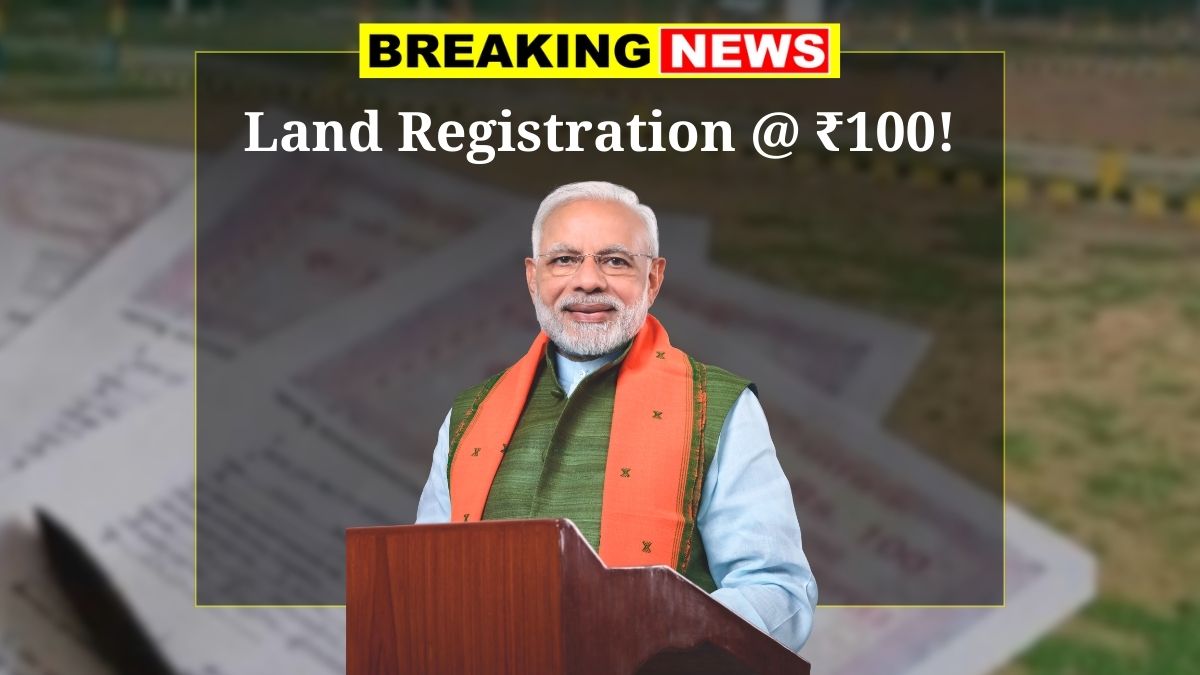New Land Registration Rules : Starting May 15, 2025, the Indian government is rolling out a game-changing update to land registration rules—you can now register land for less than ₹100 in select cases! The goal? To make property ownership more affordable, transparent, and hassle-free, especially for farmers, low-income groups, and first-time buyers.
Here’s everything you need to know about this massive land reform that’s set to impact millions across the country.
What’s New in the Land Registration System?
Under the new rules, these changes kick in from May 15:
- Registration fee slashed to below ₹100 for eligible groups.
- Entire process now available online through a dedicated portal.
- Stamp duty and service charges waived in many cases.
- Instant e-certificates issued after verification.
- Special priority for farmers, BPL families, women, widows, senior citizens, and tribal communities.
- Stronger fraud prevention via Aadhaar and GPS-based land tracking.
- State-wise rollout to align with local land laws.
Who Can Register Land for ₹100 or Less?
Not everyone qualifies, but here’s who does:
- Farmers transferring ancestral or agricultural land under 1 acre.
- Families Below Poverty Line (BPL).
- Women buying land in their own name.
- Widows and senior citizens formalizing ownership.
- Tribal community members registering long-held land.
- First-time landowners securing their first property.
Why This Is a Big Deal
The reduced cost and faster digital process could change the way Indians own land. Here’s what the policy is expected to do:
- Cut out middlemen, saving people from hidden costs.
- Reduce land disputes with proper documentation.
- Empower vulnerable groups, especially women and rural citizens.
- Help people access loans and subsidies by formalizing their property.
- Support the goal of 100% land record digitization.
How to Register Land Online (Step-by-Step)
- Visit your state’s official land registration portal.
- Log in or sign up using your Aadhaar-linked mobile number.
- Click on ‘New Registration’ and fill in the land and owner details.
- Upload documents: Aadhaar, land papers, photos, income proof (if needed), etc.
- Pay the small fee (₹100 or less).
- Wait for online verification.
- Once approved, download your e-certificate of ownership.
Documents You’ll Need
- Aadhaar Card
- PAN Card
- Land ownership proof or title deed
- Address proof (ration card, utility bill)
- Passport-size photo
- Income or caste certificate (if applicable)
- Widow/senior citizen certificate (for exemptions)
What to Watch Out For
- The ₹100 rule only applies to specific categories—don’t assume it’s for everyone.
- Submitting false information can get your registration cancelled.
- While it’s mostly online, random land inspections may still happen.
- Fast-track courts will handle any post-registration disputes.
Old vs New: What’s Changed?
| Aspect | Old System | New Rules (May 2025) |
| Avg. Registration Cost | ₹15,000–₹50,000+ | Less than ₹100 |
| Time Taken | 1–3 months | 7–10 days |
| Mode | Mostly offline | 100% online |
| Fraud Detection | Limited | Aadhaar + GPS-linked verification |
| Accessibility | Complicated | Simple and inclusive |
In Summary
This is one of the biggest land reforms in decades. If you or your family fall into one of the eligible groups, you could become a landowner for just ₹100. It’s time to ditch the paperwork, skip the bribes, and get your property registered the easy way.
Keep an eye on your state’s official announcements to be the first to benefit from this powerful new system!



